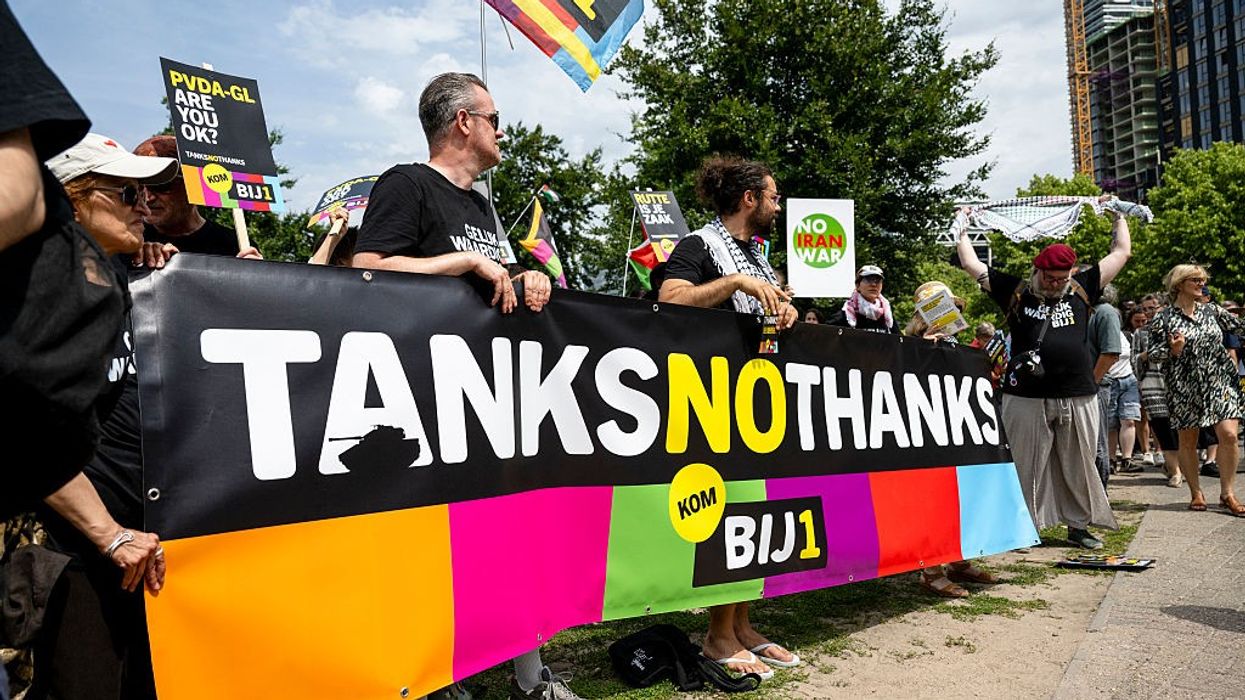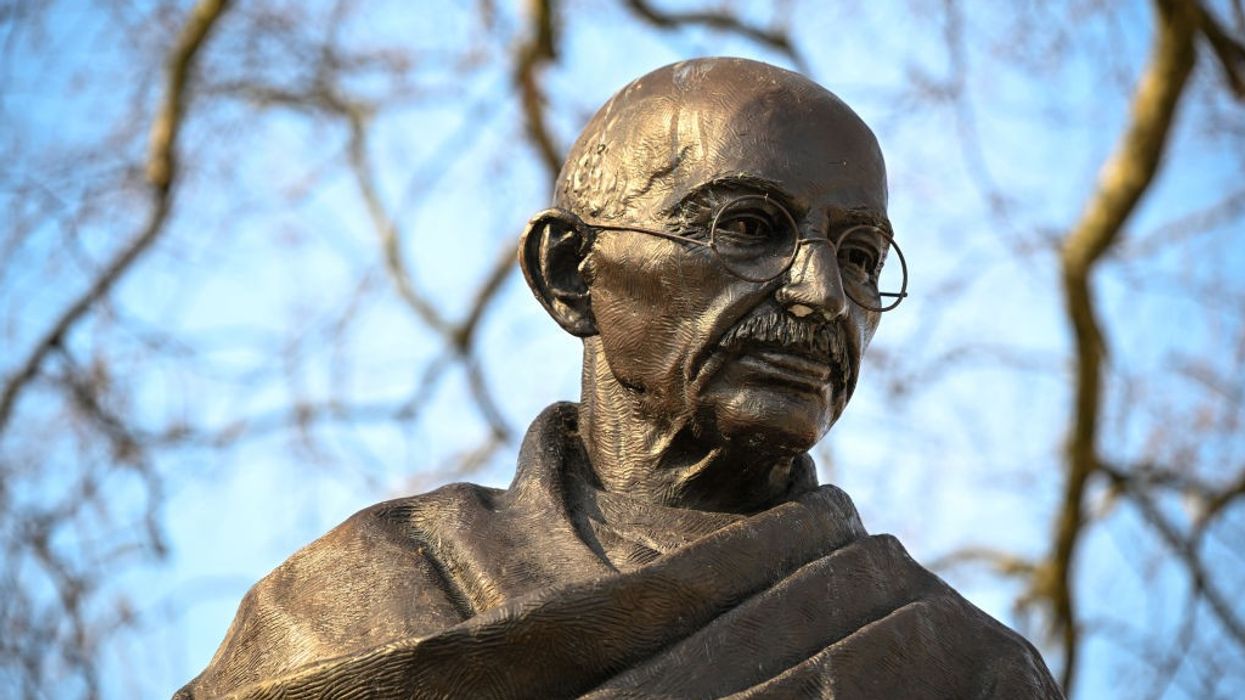Blessed Are the Peacemakers. And, No, None of Them Are Trump
People are tired of funding wars instead of aid and basic services that could help millions at home and abroad, but simply dumping on Trump’s peacemaking claims misses the opportunity to reach the many people who are sick of war-making.
If you want to debunk Trump’s claims to be a “peacemaker,” you’ve got plenty of options. You could name some of his most destructive actions, from authorizing weapons sales to Israel to pursuing the largest military budget ever. You could point to his appetite for flashy summits, which serve more to boost his own media profile than to advance diplomacy. You could reveal all the ways that the latest ceasefire in Gaza—while offering some essential reprieve for Palestinians and Israelis—is built on a faulty foundation that is already coming apart.
Trump hungers to make his mark on history, and if that means making peace, he’ll try for that. But just as easily, he will grab headlines by making war, from bombing Iran to deploying troops on U.S. streets. Now he is threatening direct action against Venezuela.
Yet, ultimately, Trump would not be where he is today without his uncanny ability to grasp what other politicians don’t: there is a strong, determined constituency for peace. People are tired of funding wars instead of aid and basic services that could help millions at home and abroad. Simply dumping on Trump’s peacemaking claims misses the opportunity to reach the many people who are sick of war-making.
So, instead of just rejecting Trump’s grandstanding, here’s a prescription for peacemaking that actually works.
Trump campaigned promising to end endless war, but his base is already fracturing under the pressure of this broken promise.
Luckily, those solutions are readily available, embedded in the work of grassroots, women-led peacebuilding in communities on the frontlines of war. These solutions succeed, where Trump’s ill-conceived methods fail—in three central ways.
The Trump administration’s approach to so-called diplomacy emphasizes personality instead of leadership accountable to war-impacted communities. It seeks to extract profit over providing effective care and aid. And finally, it touts rapid, shallow results for the sake of public relations rather than pursue durable peace policy frameworks informed by local expertise. All of this results in weak, short-lived deals.
Let’s take each in turn. First, Trump’s cult of personality encourages allies and adversaries to feed his vanity to improve their position at the negotiating table. For instance, after an initial visit to the Oval Office went sideways, Ukrainian President Zelensky thanked President Trump nine times during his second visit.
Grassroots women peacebuilders know that legitimacy at the negotiating table should not be about kissing the ring. It is instead rooted in the trust they’ve built among war-impacted communities. Their work—as human rights advocates, as aid providers, as community organizers—gives them actual standing to represent community needs in diplomacy. What’s more, these peacebuilders also possess the networks to exchange information and recommendations between frontline communities and policy spaces. Peace agreements that result from this feedback loop are more sustainable because people see their needs represented within them.
In Colombia, which experienced decades of civil war before a 2016 peace accord, community organizations mobilized for years to gather people’s testimonies of the war’s impacts, to transmit their demands, and to include gender and racial justice provisions in their country’s peace process. These were not only positive contributions to their peace process but also built an activated base of political power that propelled a progressive into Colombia’s presidency.
Second, Trump’s emphasis on profits incentivizes economic extraction. The June 2025 peace agreement between the Democratic Republic of Congo (DRC) and Rwanda promised the United States access to critical minerals needed for the AI sector, despite public objections to the “minerals for profits” paradigm. National Public Radio reports that this peace agreement resulted in “virtually no change on the ground in eastern Congo, despite President Trump’s frequent claims to the contrary.”
Meanwhile, grassroots peacebuilders prioritize nurturing frontline communities by providing much-needed care and aid, not stripping their resources away. SOFEPADI, a women’s organization in the DRC, has provided medical and counseling care to survivors of sexual violence and documented gender violence to inform more responsive policies. In Sudan, a women farmers union organized by Zenab for Women in Development has provided locally-sourced food aid, even amidst civil war.
Finally, the Trump administration has prioritized public relations over real peace, seeding sensationalist and misleading media stories that often declare peace where there is none. These stories give Trump credit for situations he worsened (such as by striking Iran before calling for an end to that fighting). They congratulate him for peace deals where he played little to no role (such as between India and Pakistan), or which failed to address the root causes of conflict (such as between Thailand and Cambodia).
Often some of the most painstaking, vital work of peacebuilding happens quietly and goes unsung. In Yemen, women worked for years, convening across communities and movements, to build together and regularly update a Feminist Peace Roadmap. It laid out the necessary preconditions and steps to secure durable peace. This is not smoke and mirrors; it’s rooted in hard-won, documented expertise and translated into policy language. Women leaders like these know that the peace they seek will not come overnight, in a fleeting headline, but depends upon this deliberate and detailed work.
Trump campaigned promising to end endless war, but his base is already fracturing under the pressure of this broken promise. Amidst this, progressives and feminist peace advocates have a vital opportunity: to refuse to cede the anti-war mantle to the right, while also inspiring constituents across the political spectrum with a powerful pro-peace message. The expertise and lived experience of grassroots feminist peacebuilders points the way forward to a more just world, without endless war.
Reaching across partisan divides isn’t about platforming public officials who may share an anti-war stance but have otherwise attacked human rights and justice. It’s about building ties of shared strategy and solidarity between organizations focused on policy and on base-building, with a common rights-based and pro-peace orientation. This approach also connects communities directly impacted by war and united by the experience of state-sanctioned violence. (The Feminist Peace Playbook we co-produced lays out many of these strategies, to build power for a peaceful and demilitarized US foreign policy, in more detail.)
Last month marked 25 years since the UN Security Council adopted Resolution 1325, asserting the critical importance of women’s leadership in advancing peace and security. For decades, the evidence has been clear. Centering the leadership of grassroots feminist leaders makes lasting peace achievable. But it will remain beyond reach as long as the real peacemakers struggle to secure political backing, attention, and resources, while Trump takes the limelight.
Feminist values of care and inclusion can create policies that will be trusted and embraced by local communities, even in times of violence and collapse. That wisdom is sorely needed here in the United States and around the world.


